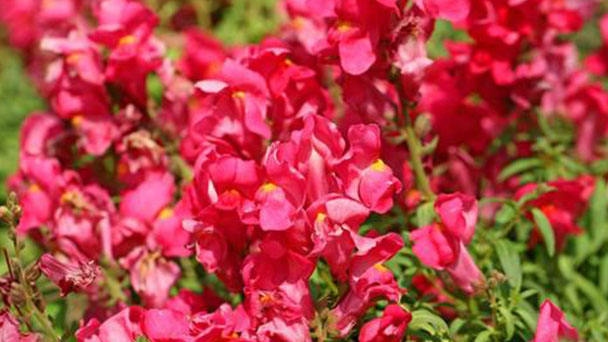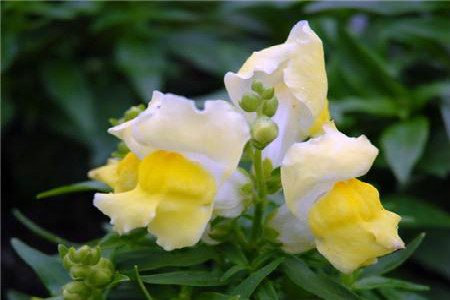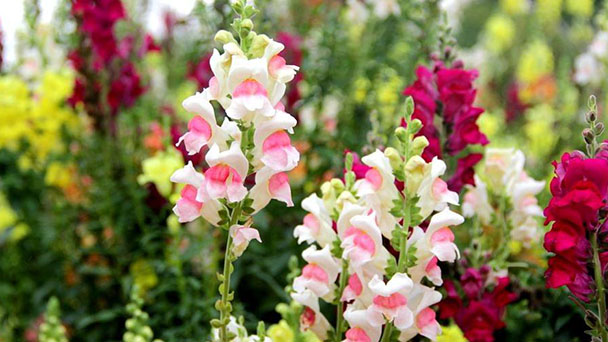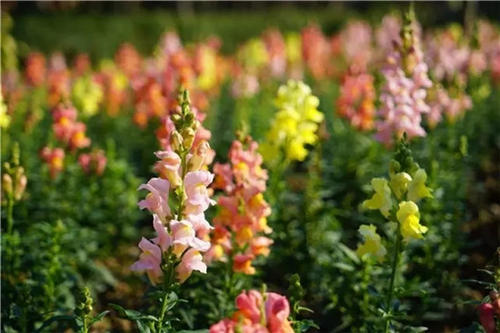The breeding methods and precautions of Antirrhinum majus
Written by Maggie
Nov 25 2020

Antirrhinum Majus is a perennial herb with a showy color and is ideal for viewing. It is named after the flower shaped like a goldfish. How do you make such a good Antirrhinum majus? What good method does breeding have again? What items need to pay attention to in breeding again? Please read along with me with questions!
Antirrhinum Majus picture

Breeding methods of Antirrhinum Majus (Basic knowledge) :
Best time to breed: Antirrhinum Majus mainly used for seeding. In spring and autumn, sowing can be applied. Autumn sowing was more common in the Yangtze River basin and basin sowing was also more common in northern China. Spring sowing should be carried out in March to April, or can be inserted with the rod reproduction.
Best growing soil: Antirrhinum Majus does not require much in the way of soil and should use fertile, loose and well-drained slightly acidic sandy loam.
Requirements of growth humidity: Antirrhinum Majus is wet-tolerant and afraid of drought. In the maintenance and management process, watering must master the principle of "see dry see wet" and spray water once every 2 days or so.
Best growth temperature: Antirrhinum majus is cold resistant and half shade resistant。 It can resist low temperatures above -5℃, while it is easy to freeze to death below -5℃.
Best light conditions: Antirrhinum majus is a photogenic herb. Under full sunshine, plants are short, compact clumps, orderly growth, uniform height, neat flowering, bright colors. Under half - shade condition, plant growth is on the high side, inflorescence is elongated, flower color is lighter.

Tips for breeding Antirrhinum Majus:
Fertilizer application:
(1) To strengthen the management of fertilizer and water .Fertilization should pay attention to the coordination of n, P and K.
(2) Antirrhinum Majus has rhizobia, which can fix nitrogen itself. Generally, nitrogen fertilizer should not be applied, but phosphorus and potash fertilizer should be added appropriately.
(3) During the growth period of Antirrhinum Majus, it is better to spray with 1 {bf} ~ 2 {bf} potassium dihydrogen phosphate solution when buds appear in combination with watering the fermented sludge water once every half a month. It is better to release soil and weeding before each fertilization.
(4) After the transplanting of Antirrhinum Majus, topdressing should be applied frequently in order to ensure the normal development of the cylinder. Generally, during the growing period, topdressing should be applied once every 10 days. Helium-potassium mixed fertilizer can be used, and the concentration should be 0.01 {bf}.

Watering points:
(1) Irrigate and permeate Antirrhinum Majus after planting. After that, irrigate the soil as soon as it dries. At ordinary times, prevent basin soil water and pay attention to often loose soil.
(2) Usually lose pot spit, appropriate watering, control watering in winter, can make Antirrhinum majus grow healthy, flowers being colorful.
(3) Antirrhinum Majus is sensitive to water. Potting soil must be kept moist and potted seedlings must be watered adequately. But the basin soil drainage is good, and we can not water, otherwise the root rot, stem and leaves withered yellow withered.
Main points of pruning:
(1) When Antirrhinum majus seedlings grow to about 10cm, they can be picked to shorten the height of the plant, increase the number of side branches and increase the number of flowers.
(2) When pruning Antirrhinum majus, cut off weak branches, withered old branches and too dense branches. After every flower, cut off the branches of flowers, to promote its germination of new branches that continue to bloom.
Basin soil changes: the container appropriate of potted uses the devonian that basin diameter is 15 centimeters or plastic basin, but permeability is close friends. Loose, fertile and well drained culture soil or leaf rot soil, peat, forage grass ash should be used as culture substrate. Before planting Antirrhinum majus, apply some dried animal manure or cake fertilizer, with bone powder or superphosphate as base fertilizer.

Breeding points:
1. Sow and reproduce.The area south of the Yangtze River can sow in autumn, with September to October as the best.For sowing soil, a mixture of peat soil or leaf rot soil, culture soil and fine sand shall be pasteurized and placed into a sewing dish. Antirrhinum majus per gram seeds 6300 ~ 7000 seeds, after sowing, do not cover, press the seeds gently line, germination appropriate temperature is 21℃, after watering covered with plastic film, put in the shade, about 7 days can be germinated, do not expose to the sun.The seedling growth temperature was 10℃ after germination, and it could be transplanted 6 weeks after emergence.
2. Cuttage propagation.Cuttage is mainly used for double hard bearing varieties and special fine varieties. In spring, the sprouting branches were used after core picking, and in autumn, the unblossomed branches were used as cuttings, with high rooting rate in spring.The cuttings were 8 ~ 12cm long with 2 ~ 4 segments, and only the upper section 1 leaf was kept, and 1/3 ~ 1/2 were cut off for cuttage on the sand bed. Before cutting, the cuttings were dipped in a mixture of 800 mg/l butyric acid and 1 g/l acetic acid for 30 seconds.In the daytime, the temperature was controlled at 15 ~ 22 ℃, and the Antirrhinum majus seedlings were grown in containers after rooting at 10.15 ℃ at night.
Pest control: In the seedling stage of Antirrhinum majus, there may be seedling rot. The disease is root rot, plant lodging or dying.The control method is to avoid too low earth temperature.It can also be sprayed with bordeaux mixture.
Latest Updated
- Benefits of Bugleweed - 7 Science-backed Health Benefits
- Bugleweed Dangers & Side Effects - Is It Poisonous?
- How to Plant Evergreen Trees - What You Should Know
- When to Plant Evergreens - Grow Guide for Evergreen Trees
- 12 Wonderful Evergreen Shrubs for Your Garden
- 12 Popular Evergreen Plants with Pictures for Beginners
- When And How To Prune A Lilac Bush Like a Pro
- How to Grow & Care for Lilac Vine (Hardenbergia Violacea)
- Japanese Lilac Tree (Syringa Reticulata) Care & Propagation Guide
- Shumard Oak Pros and Cons - What to Know
Popular Articles
- Winter maintenance of Antirrhinum Majus
- How to Grow Terminalia Mantaly Tree
- How to Grow and Care for Crossostephium Chinense
- How to grow Antirrhinum Majus in spring
- Peristeria Elata (Dove Orchid) Profile: Info & Care Guide
- Underwatered Snake Plant (Sansevieria Trifasciata) - Signs And How To Fix
- How to Care for Brazilian Jasmine Plant (Mandevilla Sanderi)
- How to Grow & Care for Graptopetalum Purple Delight in Summer
- Rosa Chinensis (China Rose): Plant Growing & Care Tips
- How to Care for Baby Sun Rose (Aptenia Cordifolia)